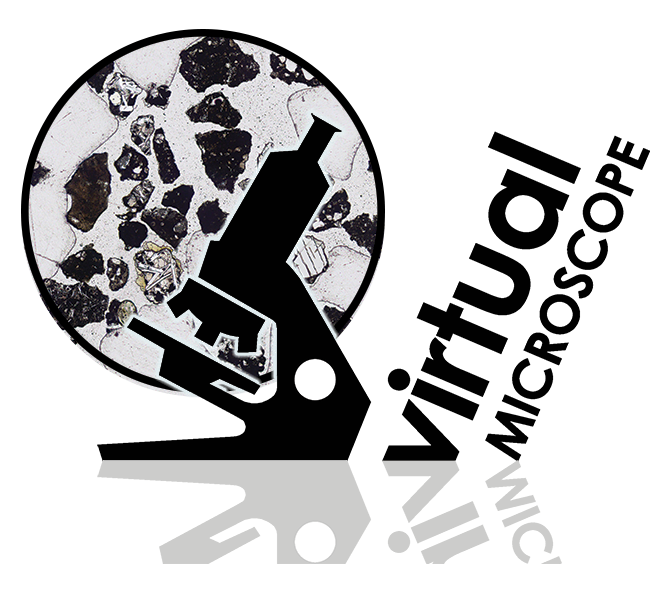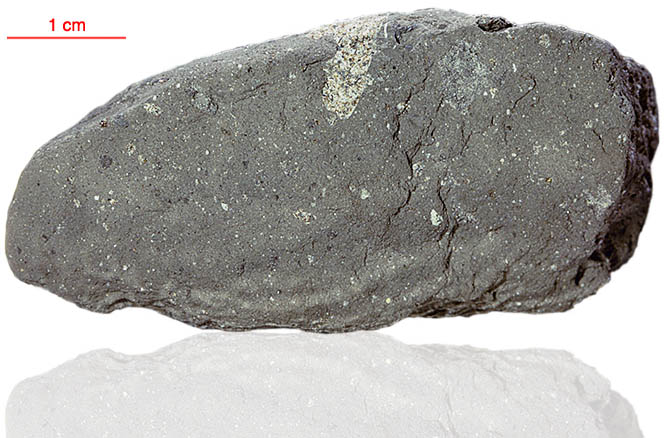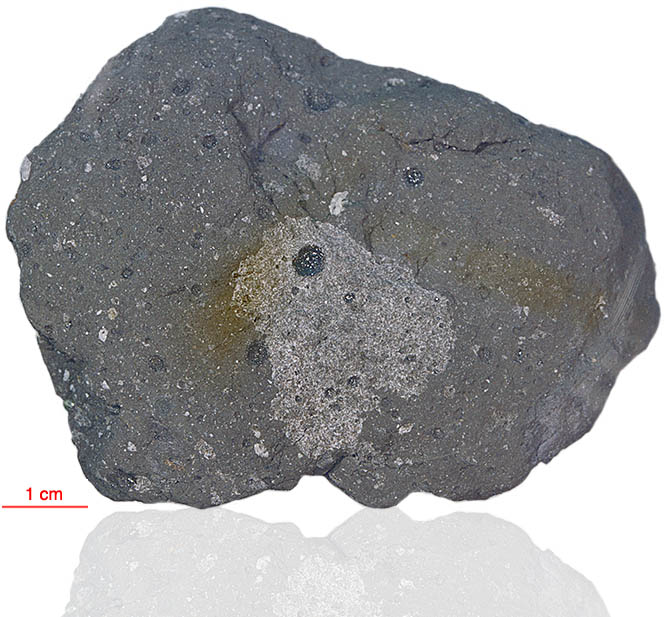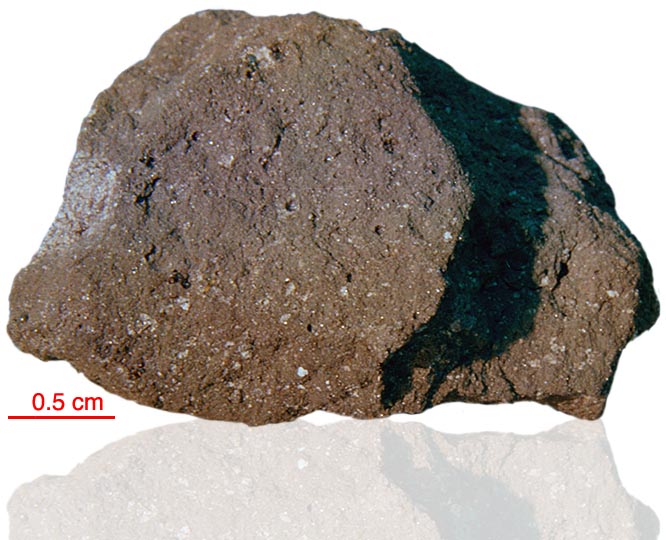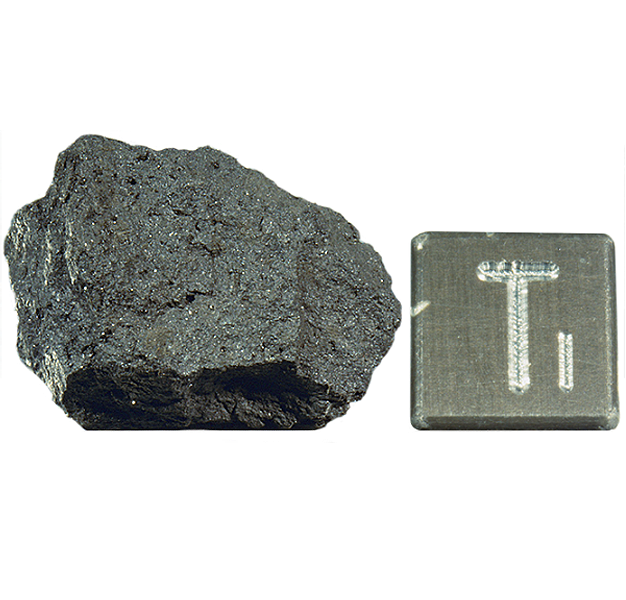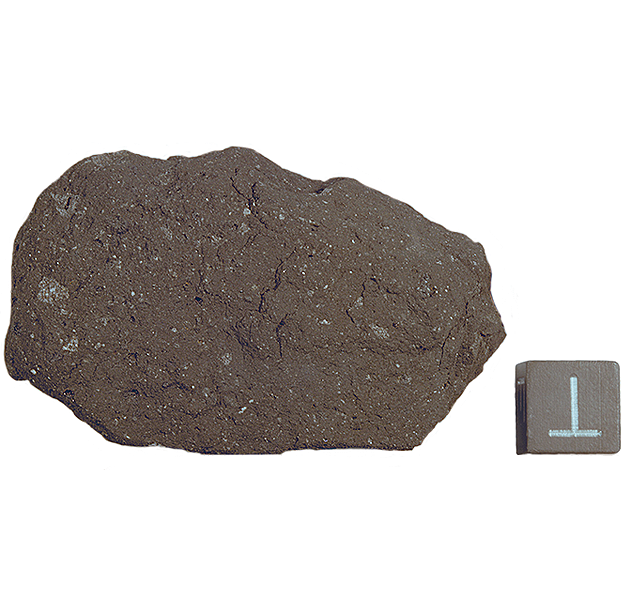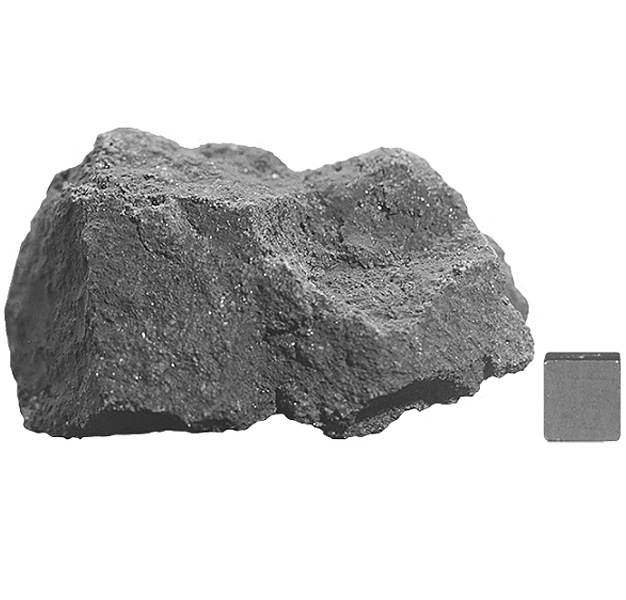
Fact sheet
10044 is a grey-white, medium- to coarse-grained ilmenite basalt that some authors have described as a microgabbro. Crystallisation age of the sample is 3.7 billion years. Its weigh is 248 grams. Mineralogically, 10044 consists of anhedral phenocrysts of pyroxene in a partially enclosing matrix of plagioclase feldspar and ilmenite. The pyroxene composition is variable with core to rim zoning from augite to the rare species pyroxferroite - a mineral first discovered in Apollo samples. Interstitial areas of the sample are filled with anhedral cristobalite, troilite containing iron blebs, K-rich glass and irregular-shaped vugs up to 0.3 mm. Accessory amounts of ulvospinel, apatite and an un-named Y-Zr mineral are also reported (tranquillityite?). The flowery growths around the sample (particularly visible in XPL) are artefacts caused by the interaction of solvent with the embedding resin.
Further details of this and other Apollo samples are here: http://curator.jsc.nasa.gov/lunar/
The Apollo 11 samples create an iconic collection since they were the first rocks collected by humankind that were returned to Earth from another solar system body. The Apollo 11 team collected and returned 22 kg of rock and soil samples.
Apollo 11 launched from Cape Kennedy on 16 July 1969. An estimated 530 million people watched Armstrong's televised image and heard his voice describe the event as he took "...one small step for a man, one giant leap for mankind" on 20 July 1969.

